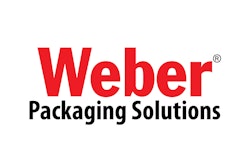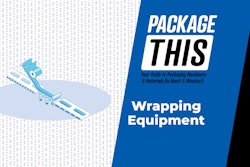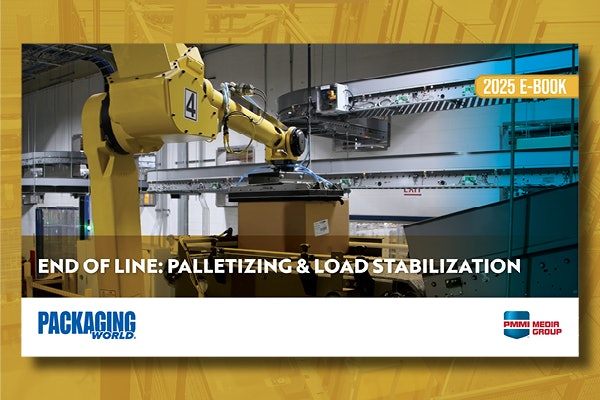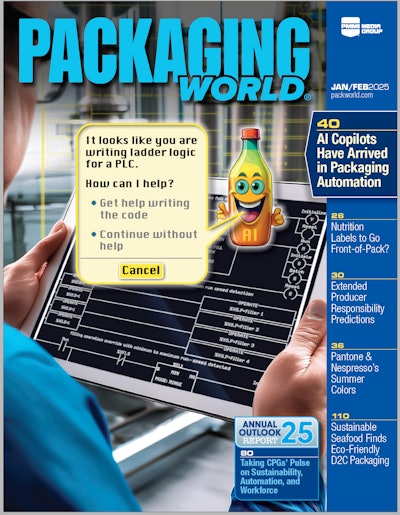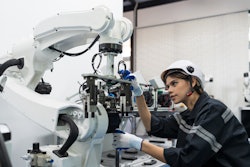Spun off from custom packaging machinery manufacturer Luciano Packaging Technologies, Particle Inspection Technologies specializes in particle and vision inspection systems for the pharmaceutical industry. Among its most recent developments is the PIL-30, which uses camera systems and software to inspect filled and sealed syringes at 30/min. Syringes having particles outside predetermined size parameters established by the FDA are rejected.
At the heart of the sophisticated system is a single centralized controller: TwinCAT automation software from Beckhoff. In addition to being able to run PLC functions, this PC-based platform also handles motion and HMI. Moreover, because it’s PC-based, it has a number of communications benefits inherent in it. The cameras in this application, for example, are communicating with the TwinCAT automation software via standard Windows protocols. The USB3 connectivity between the cameras and the PC-based software is built right into the software. In this particular case, the TwinCAT control software is running on a standard non-industrial PC, which is perfectly suitable in the pharmaceutical environment where the machine will be running, a setting where everything is super clean and temperature controlled.
According to Beckhoff’s Doug Schuchart, Regional Sales Manager, PC-based control is especially helpful in a system where vision and cameras are involved. “When capturing images and then analyzing them in order to make decisions on the machine control based upon what’s in those images, having a PC-based control platform offers huge advantages. Combining the PC used for vision and the PLC into one centralized CPU provides significant cost savings. Plus, by having a large hard drive to store many large image files, the PIL-30 is able to quickly react since the images are on the same PC as the machine control software—in this case, TwinCAT,” says Schuchart.
Another key Beckhoff contribution to this machine is the EtherCAT industrial Ethernet system. The I/O system on the PIL-30 is networked via EK1100 EtherCAT Couplers. Also from Beckhoff are the servo drives and motors that actuate the syringe inverter wheel, the main starwheel that takes syringes through all the inspection stations, two syringe-spinning stations, and finally a label application drum that rotates the syringes so that the pressure-sensitive labels can be smoothed out on the syringe body.
“I’ve been using Beckhoff controls for some time now,” says Jerry Wierciszewski, the PIT engineer principally responsible for the design of the machine. “The main reasons are flexibility, speed, and efficiency of communication.
Big improvement
To appreciate the quantum leap forward this equipment represents, it’s important to realize that the customer to whom it will soon be shipped is currently conducting particle inspection manually. Moreover, to meet the inspection requirements dictated by FDA, it takes 10 or 12 people working 20 hours/day. The PIL-30 will get the job done with two operators in an eight-hour shift.
When the machine is delivered it will perform particle inspection in a semi-automatic mode. The two operators will sit in front of large-screen video monitors and watch a live feed of what the vision system is seeing enhanced in size 10 times. Because two people are looking for particles in every syringe, this amounts to 200% inspection.
In this semi-automatic mode, the inspectors will have to hit a touch pad to tell the Beckhoff controller that a syringe is good or has particles that call for rejection. The controller will signal the two reject stations whenever a syringe needs to be rejected.
The goal for the future is for this semi-automatic approach to become fully automated. Already both the controller and the reject mechanisms are fully capable of accomplishing what’s needed without any involvement from the two inspectors. But FDA validation will be necessary before the human inspectors can be eliminated. In a year or so, once enough data has been accumulated to document the machine’s performance, steps will likely be taken to validate the machine’s operation in a fully automated mode.
When running, the PIL-30 takes filled syringes through 11 different operating stations. Syringes enter the system on a gravity-fed track. A syringe is picked mechanically and placed in an intermittently rotating wheel that inverts it to a needle-up orientation. Once inverted, the syringe is pushed into one of 15 spring-loaded slots on an intermittently rotating star wheel that takes the syringes through all the various inspection stations that are part of the PIL-30. The machine deploys a total of seven Ximea cameras and a machine vision software system from Halcon.
Spun at two speeds
In Station One, a servo motor spins the syringe relatively slowly so that all 360 degrees can be inspected for scratches. If there’s a scratch, the system automatically signals that syringe to be rejected. Once scratch inspection is complete, the syringe is spun at the much higher speed of 3,000 rpm to ensure that the liquid inside is moving. Then the syringe is advanced to Station Two.
According to Wierciszewski, the liquid needs to be in motion because the algorithm developed for particle inspection is based on image substraction. As soon as the spinning stops, the camera in Station Two acquires about 50 images of the syringe, each captured 20 milliseconds apart. The first of these images is the template against which all subsequent images are compared. If there’s a particle in the liquid, it will show up in a new position in the images taken after the template image because the liquid is moving thanks to the spinner. When the system detects a difference between the template image and the subsequent images, it knows there is a particle in the liquid. If the particle is larger than what is deemed allowable, the system draws a circle around it when it appears on the video monitor. This alerts the operators to the existence of a particle so that they can use their touch pad to signal the controller that that syringe should be rejected.
Station Two is for particle inspection against a white background that makes dark particles visible. Station Three is empty. Station Four is similar to Station One, where a spinner first rotates the syringe at a modest speed so that a camera can inspect for cracks. As with scratches, if a syringe has a crack that syringe is automatically targeted for rejection. Then the spinner goes into high-spin mode to again create movement of the liquid inside. The syringe is then advanced to Station Five for particle inspection against a dark background, which makes particles that reflect light stand out. If a particle shows up on the operator’s video monitor with a circle around it, the operator hits the touch pad to signal the system to reject that syringe.
Next is Station Six, a reject station that automatically ejects any syringe that has been identified by one of the two operators as faulty. Station Seven is empty and Station Eight is occupied by a Herma H400 pressure-sensitive label applicator from Weber Labels & Labeling Systems. Integrated into the labeler is an X40 thermal-transfer printer from Markem-Imaje. Mounted to this station is an Optical Character Recognition (OCR) camera, again from Halcon, that verifies the variable information just printed by the thermal-transfer printer.
Station Nine is a busy one. The cap is inspected to make sure it’s neither too loose nor overtorqued. Also identified here is cap color so that, when syringes reach the discharge station, red-capped syringes can go down one discharge lane and blue go down another. Finally in Station Nine, the accuracy of label placement is verified.
Moving now to Station Ten the syringe plunger is inspected to make sure there are no unwanted particulates on the plunger. Station Eleven is a reject station. All that remains are Stations Twelve and Thirteen, for discharge of red and blue caps respectively.
VIDEO: More content online at pwgo.to/1794











